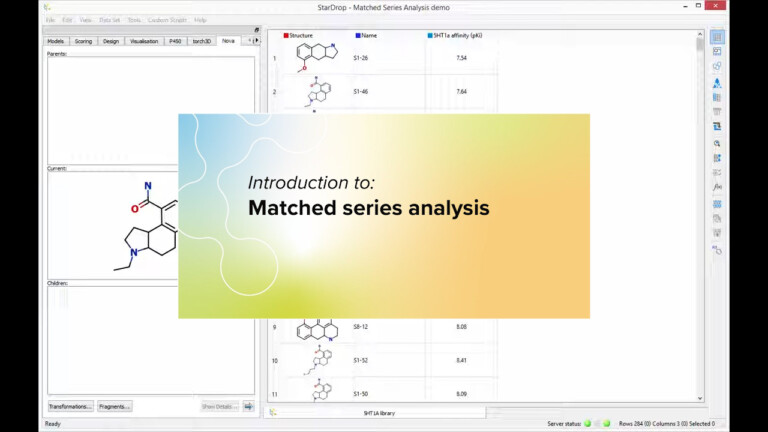Matched Series for SAR Analysis
Try Matched Series Analysis in this follow-along tutorial
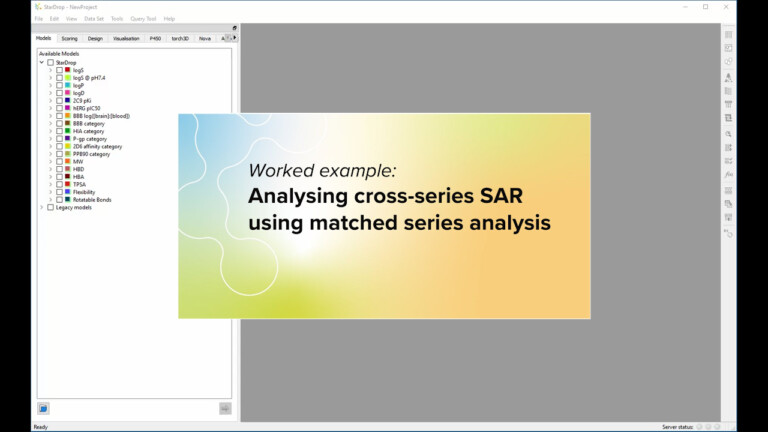
Try Matched Series Analysis in this follow-along tutorial

In this example, Card View is applied to analyse the results from a kinase project in which a large screening…

Backed by six years’ research, the new StarDrop Metabolism module combines quantum mechanics and machine learning to better predict the metabolic fate of drug candidates.
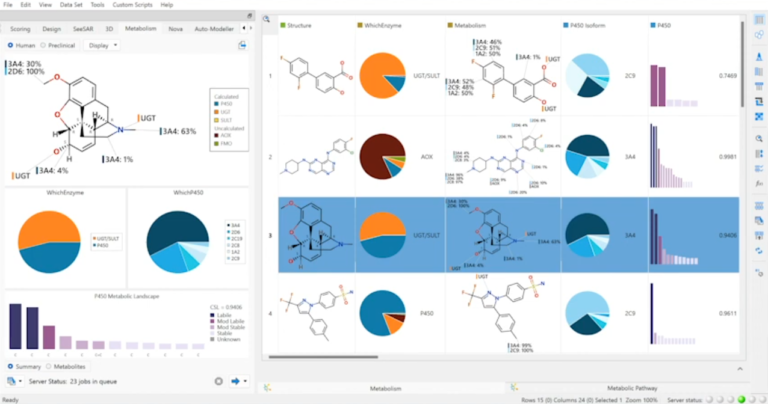
This short video illustrates how to create information rich SAR plots, including pie charts, histograms, scatter plots, radar plots, etc.…
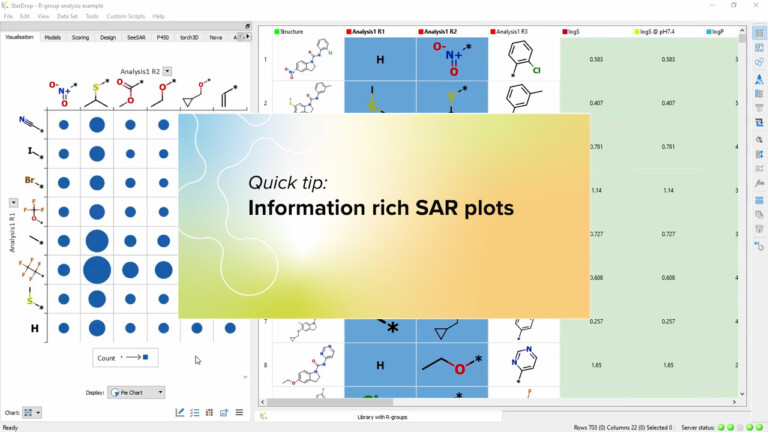
In this demo we’re going to take a look at how StarDrop can guide the prioritisation and selections of compounds using a combination of in vitro and in silico data.
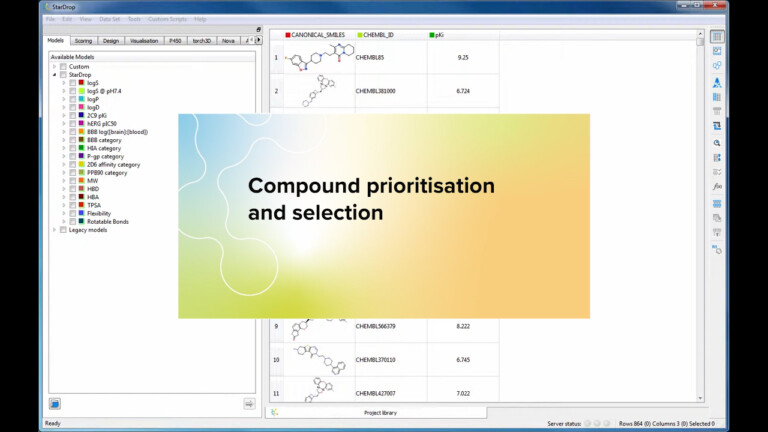
This short video gives an introduction to the tools provided by StarDrop’s Card View that help you to arrange cards…
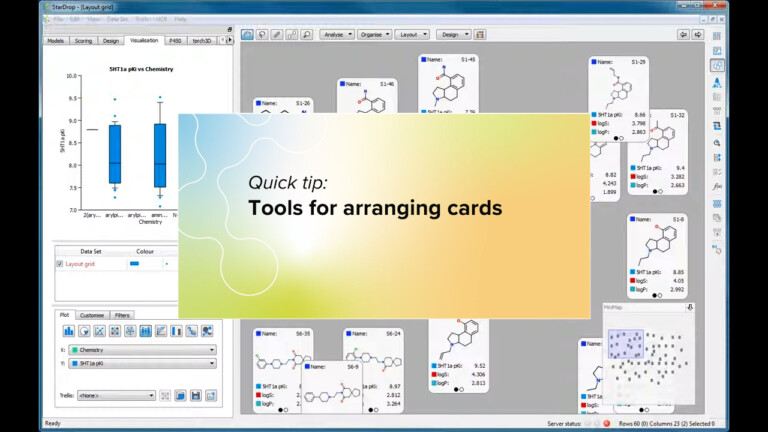
Evaluate aquatic toxicity with StarDrop Aquatic Toxicity model.

To be smelt a compound has to have a low enough vapour pressure to be in the gaseous state and…

This script provides a method for calculating Lipophilicity Efficiency; a simple metric for considering how much of the ligand’s ability…

This script enables you to search Google Patent and/or Google Scholar for patent and literature information within StarDrop. Version This integration is available to…

ChEMBL is probably the foremost manually curated database of bioactive molecules with drug-like properties. It brings together chemical, bioactivity and genomic…

This script enables you to search SpotRM to identify the structural features of your molecules that might lead to the formation of…

This short video gives an introduction to the Matched Pairs Neighbourhood tool in StarDrop’s Card View. If you are interested…
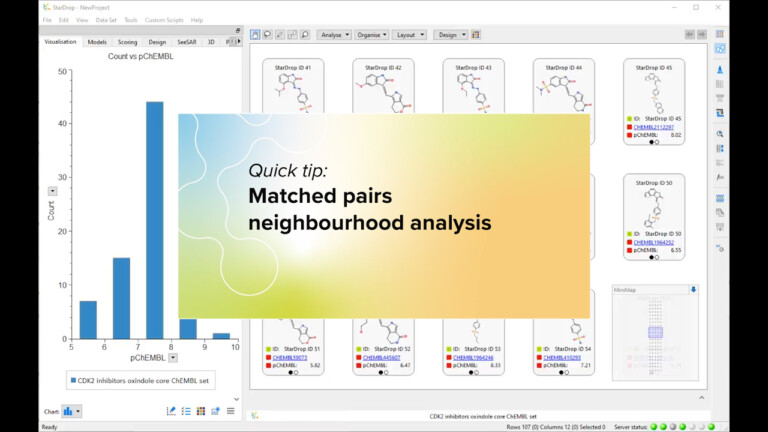
Medicines for Malaria Ventures (MMV) and Optibrium developed this property criteria and MMV Antimalarial Scoring Profile and represent their criteria for prioritisation of compounds.
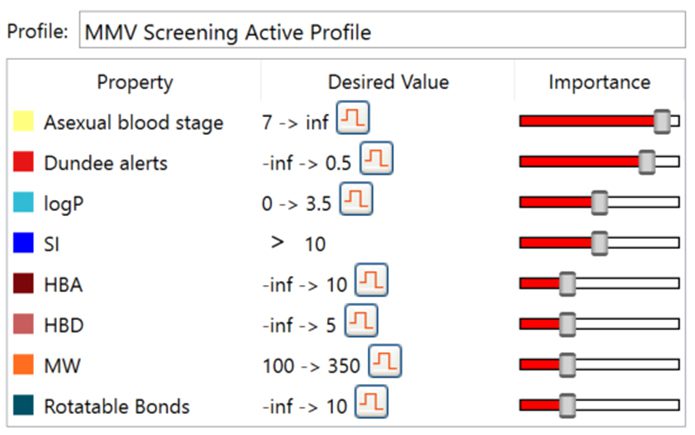
Here we’ll show how to tailor the format scales in your charts to highlight the property ranges in which you’re…
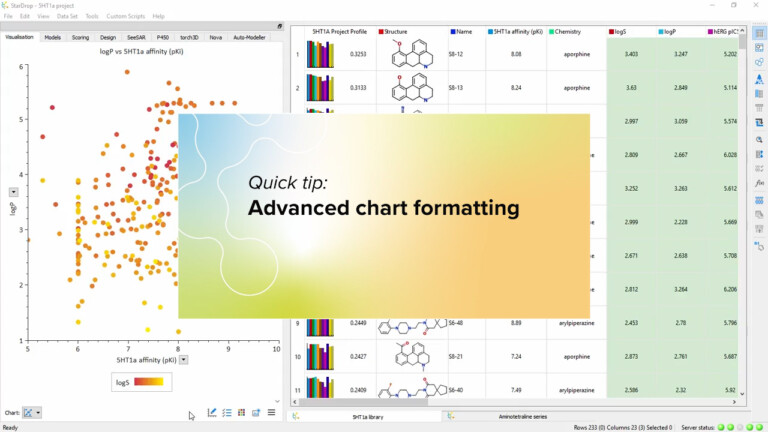
Odour type is an important property for the flavour industry. It has been observed that compounds with a similar volatility…

This short video illustrates how to you can simply copy selected compound identifiers, structures and any data directly from StarDrop…

Fragrance materials are widely used in cosmetics and other consumer products. The safety assessment of these ingredients includes skin absorption…

This short movie gives an introduction to StarDrop’s Matched Series Analysis which is part of the Nova module which searches databases of…
